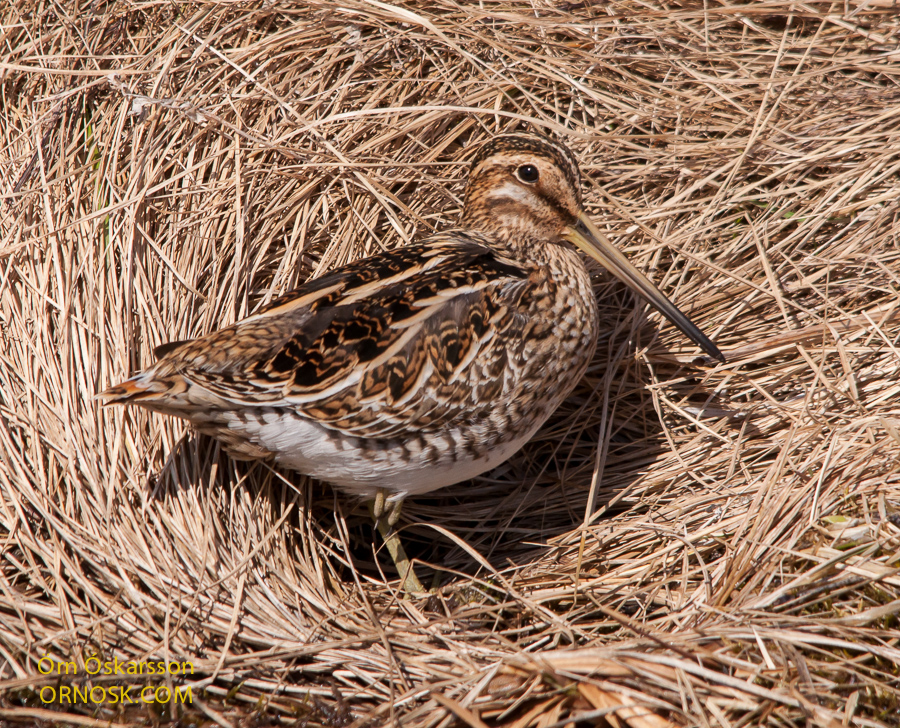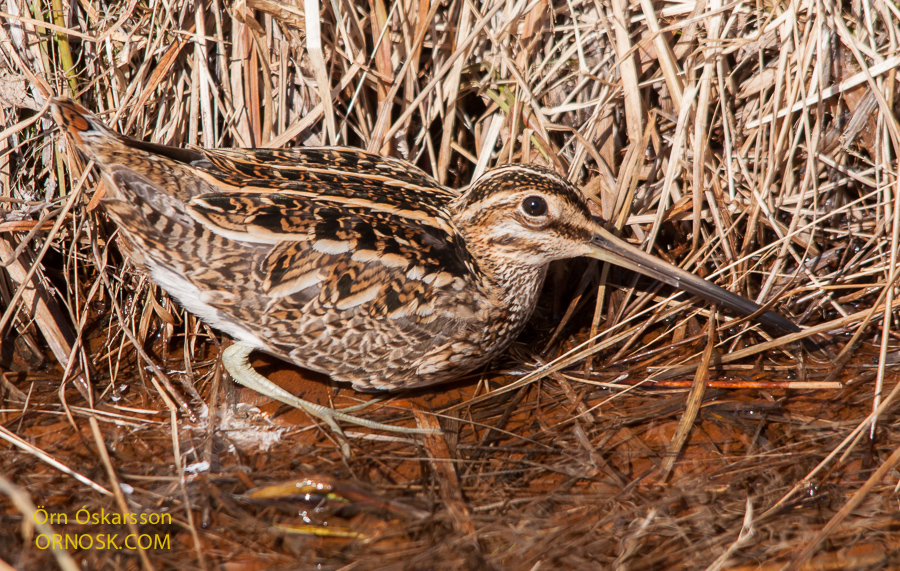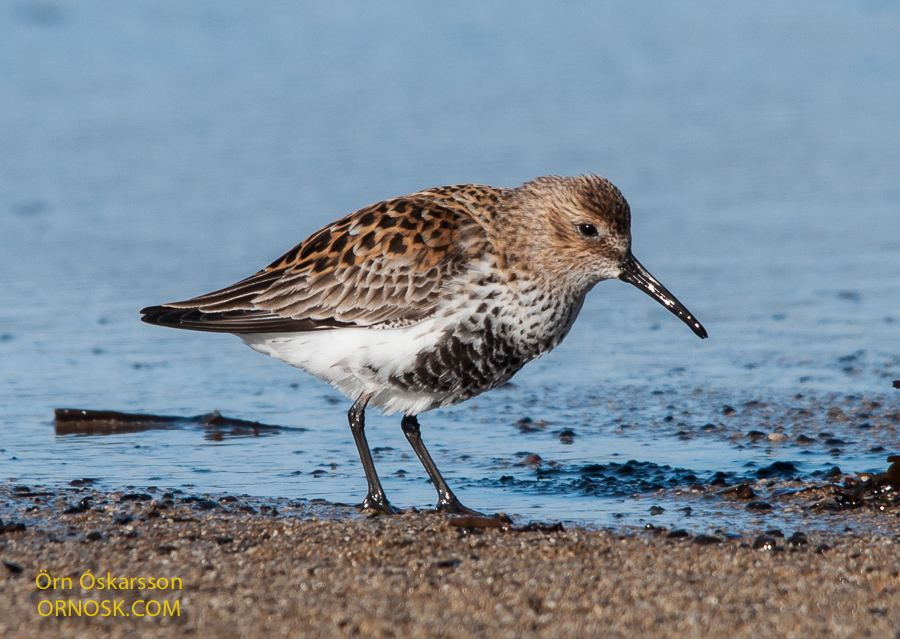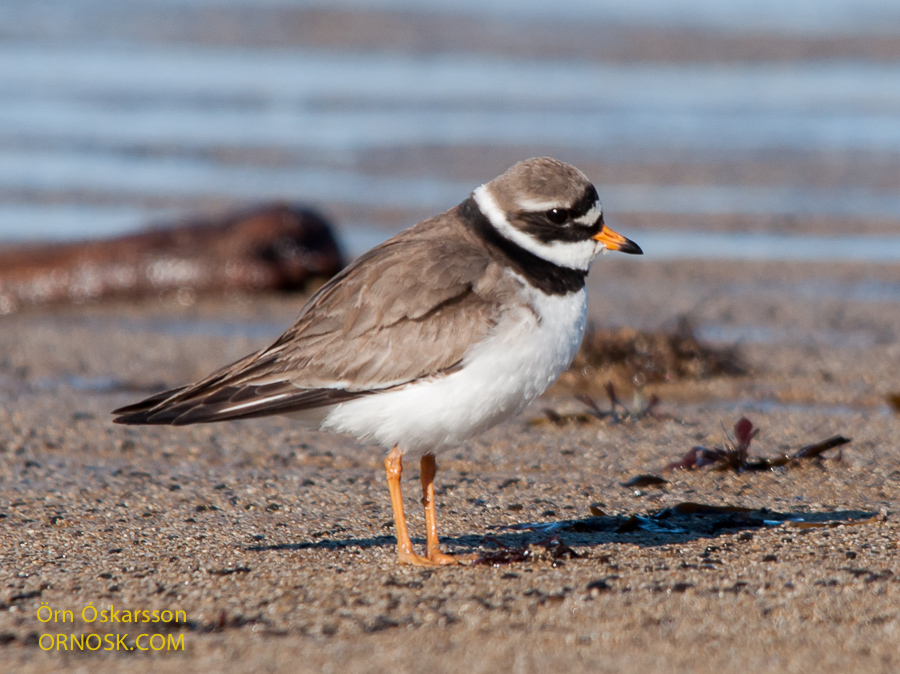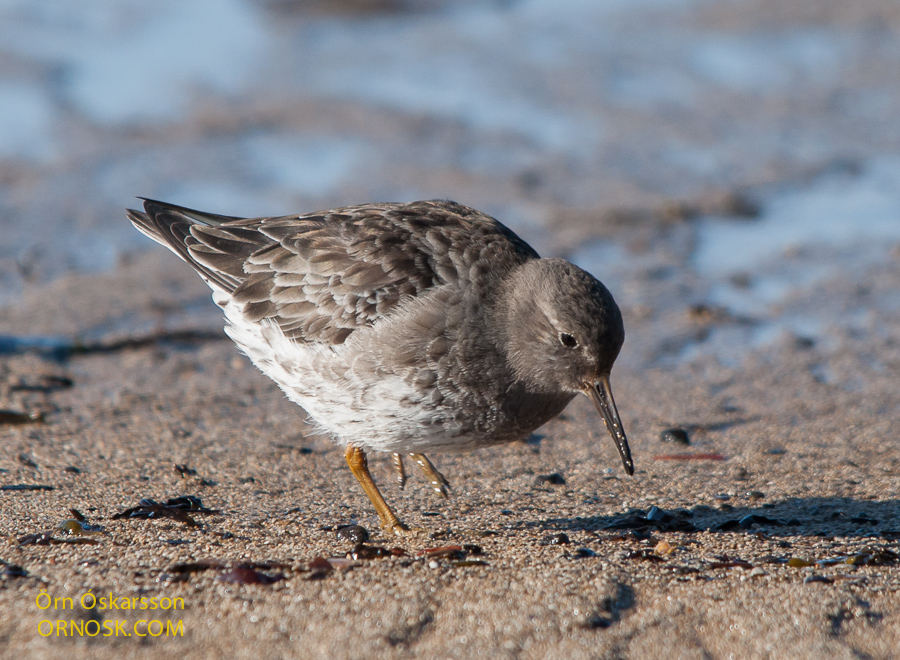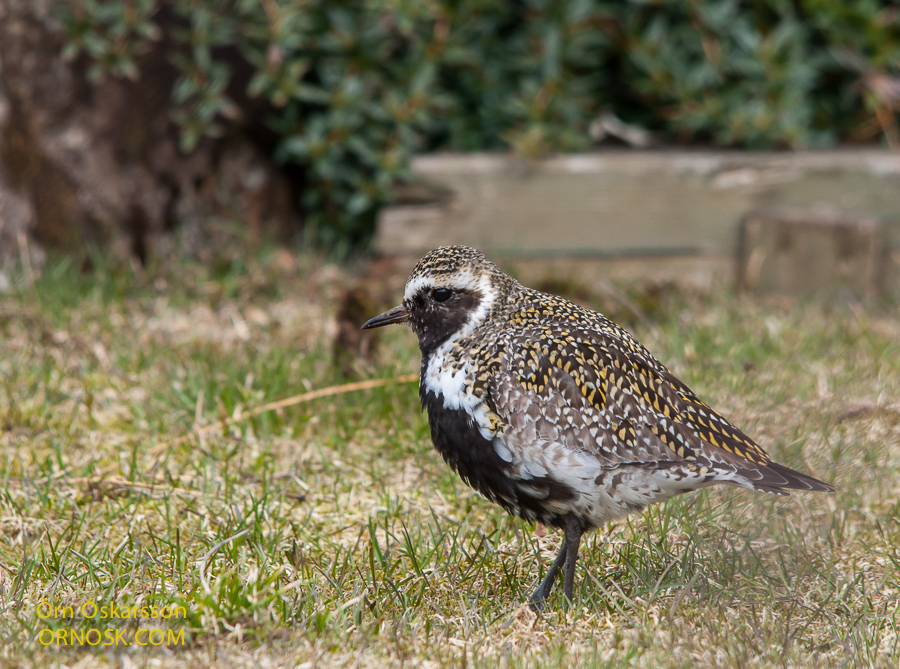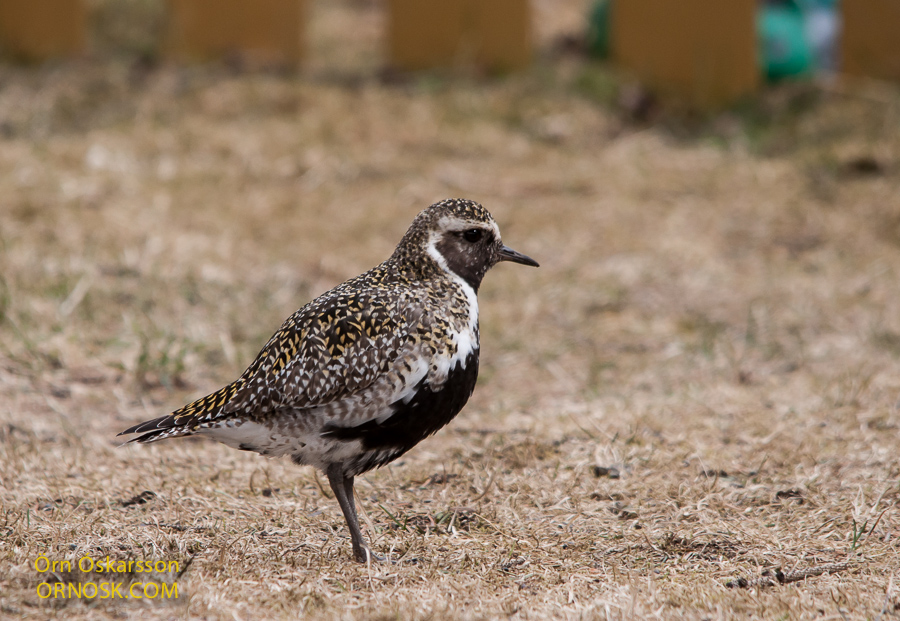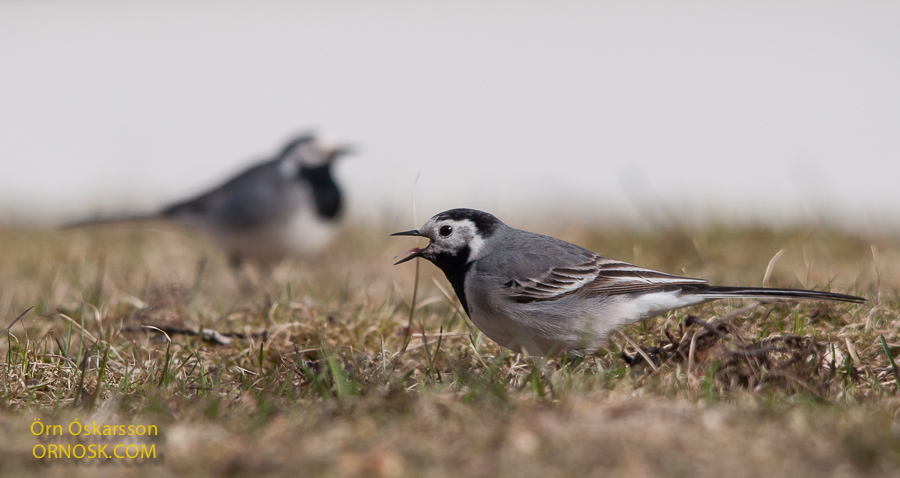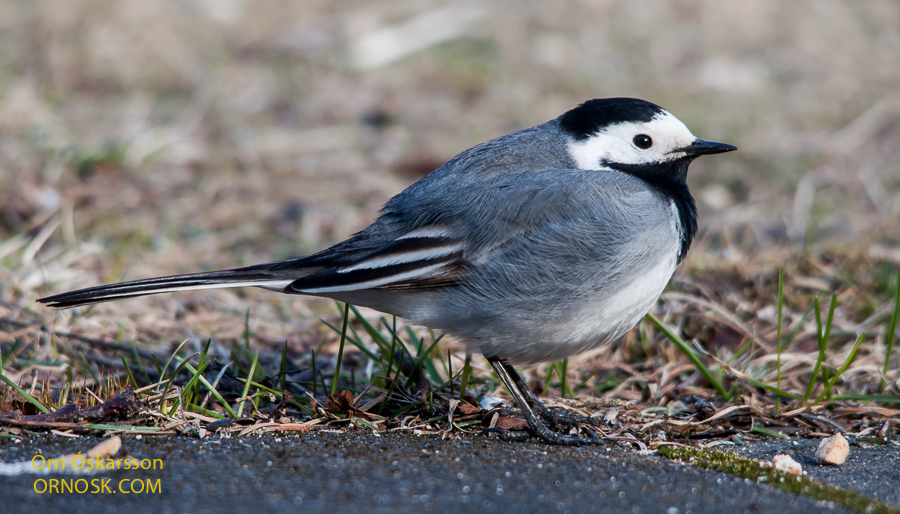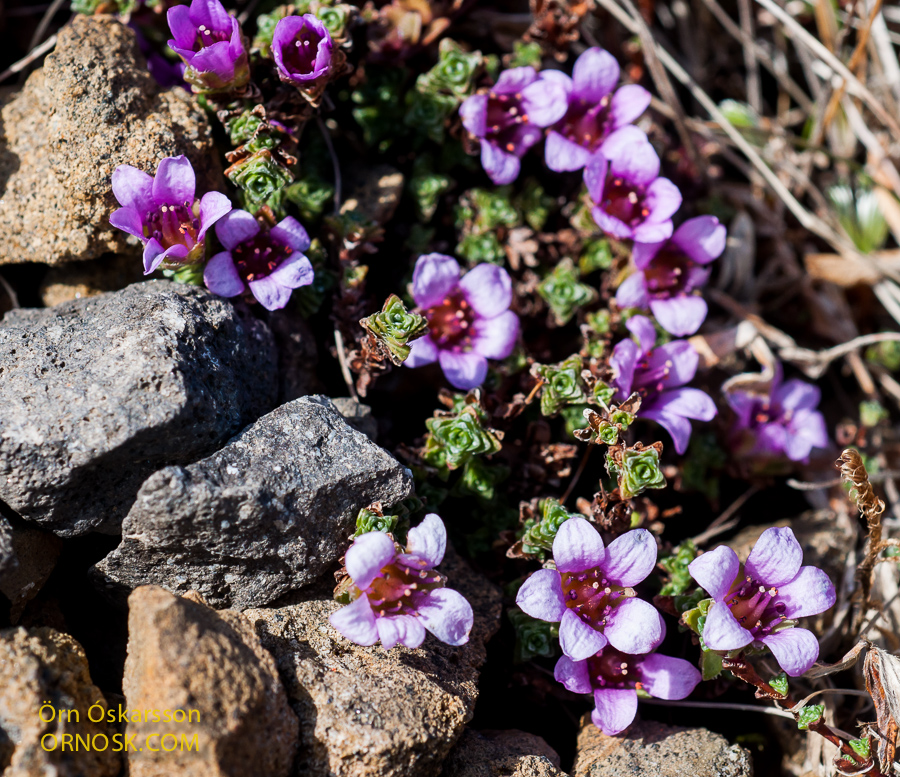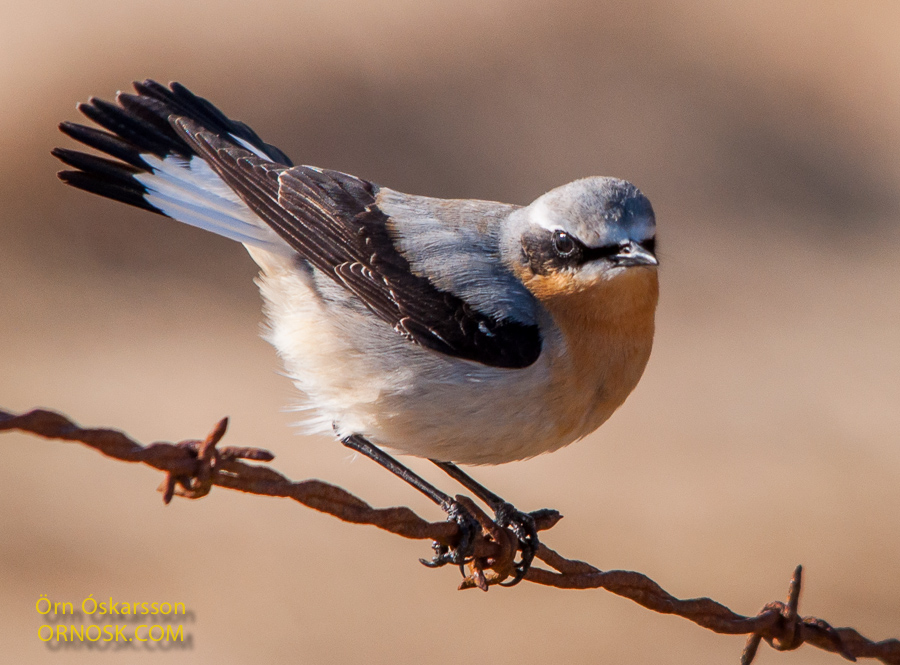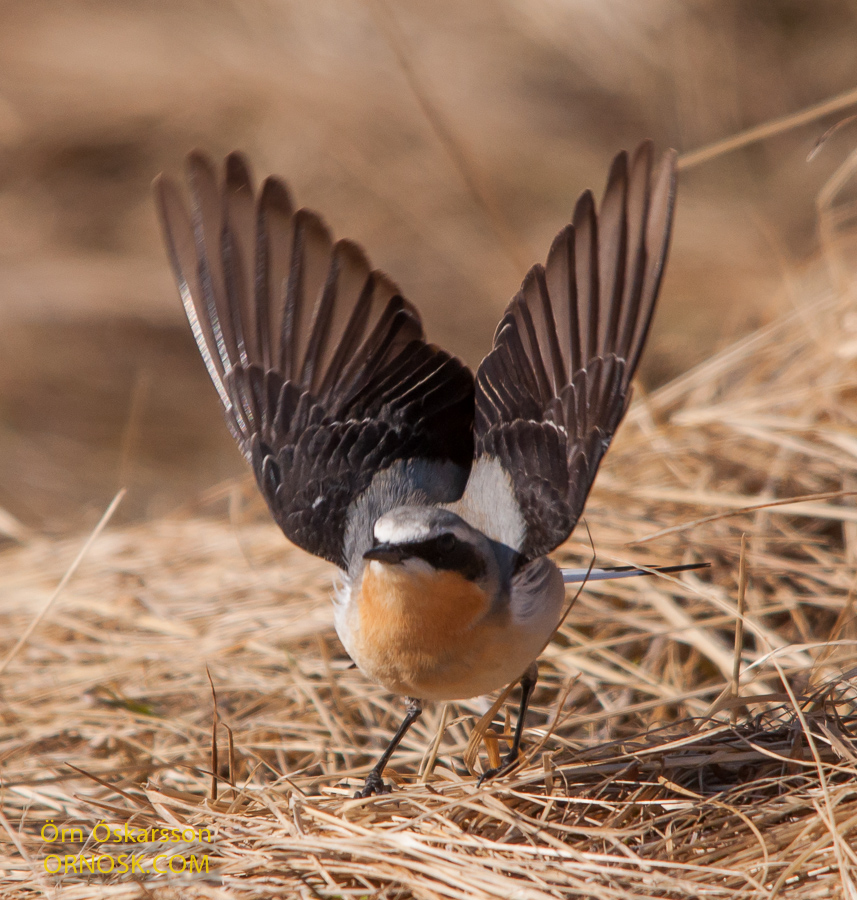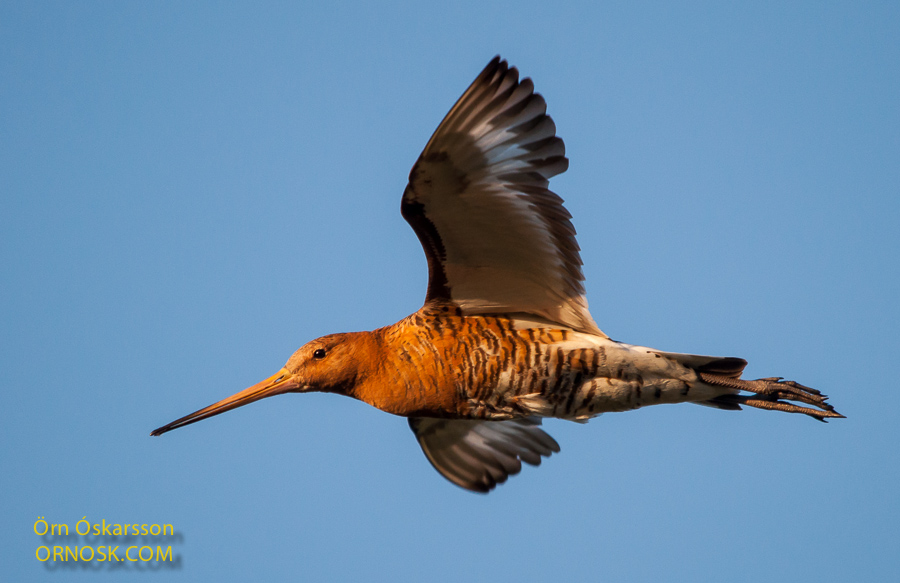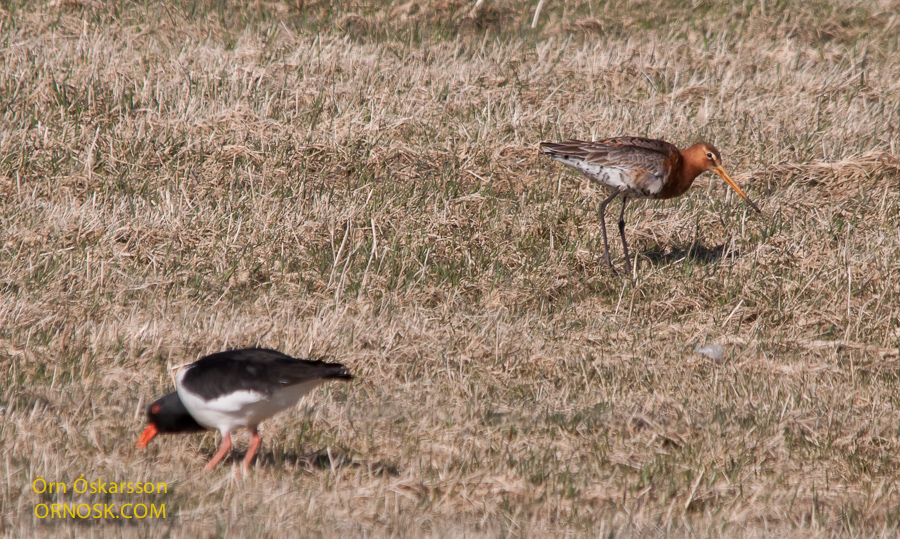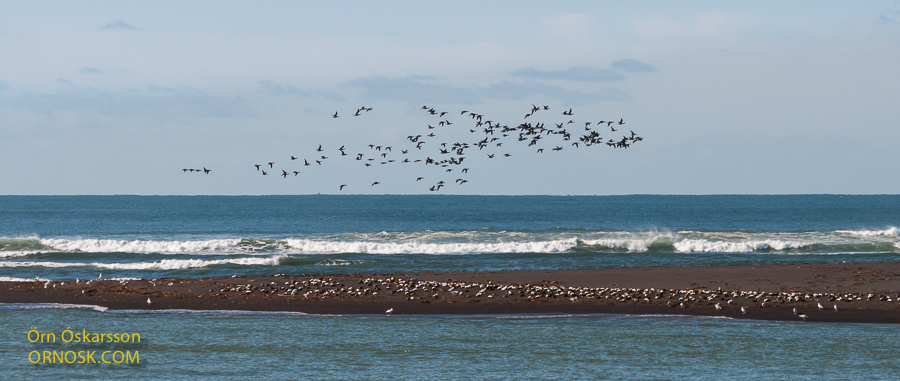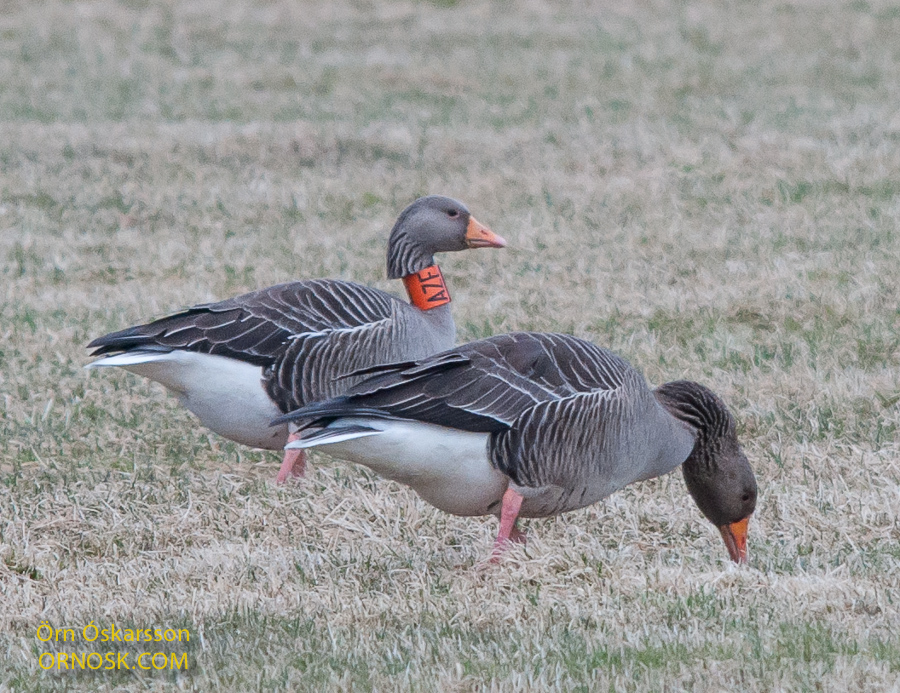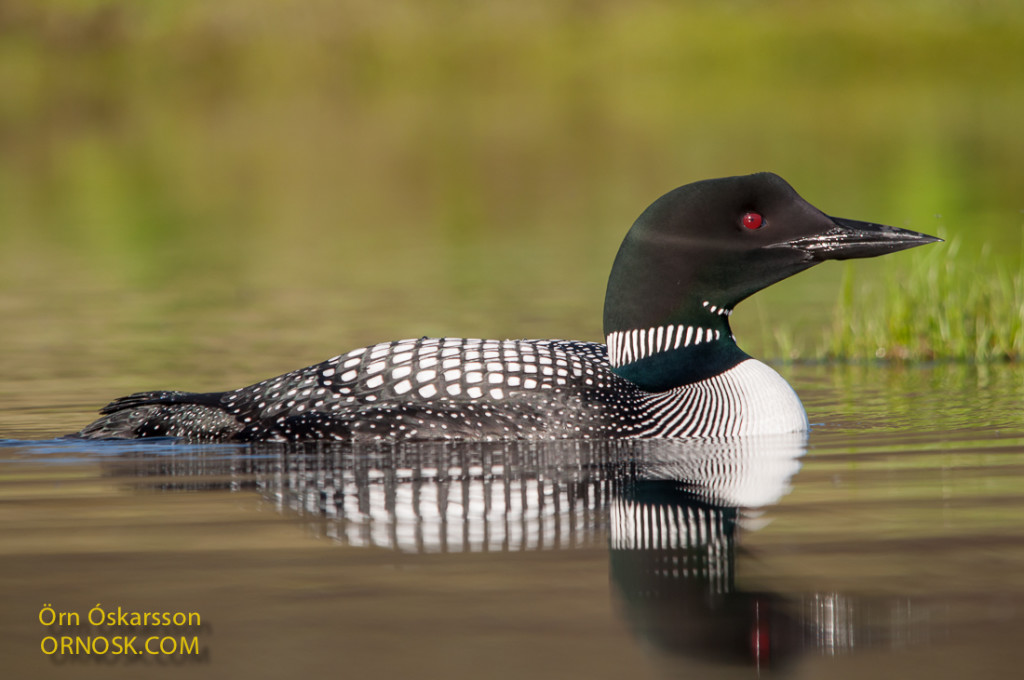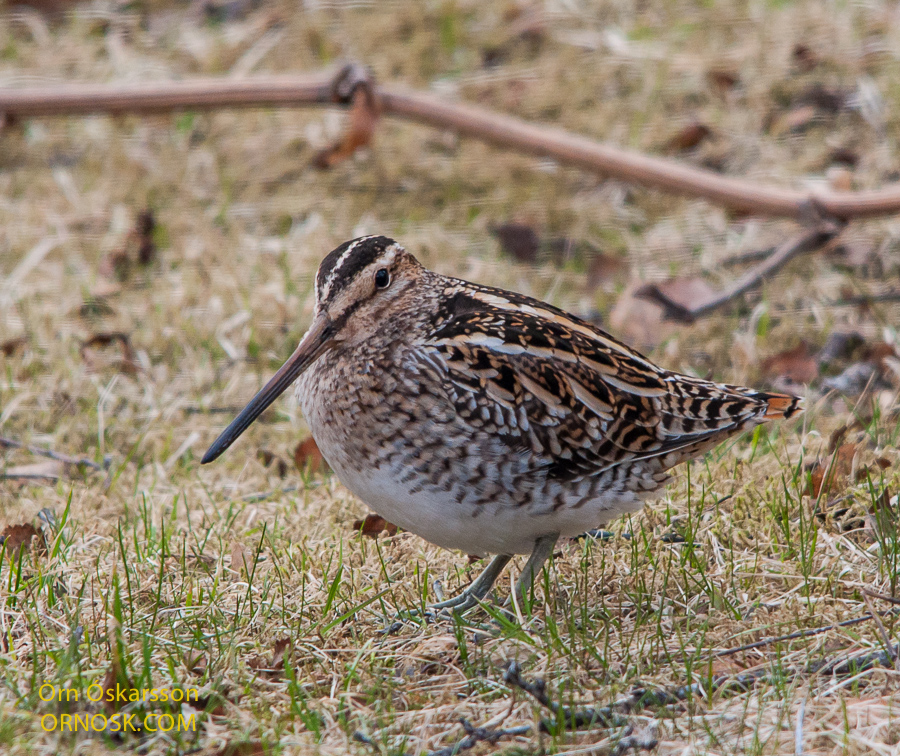
A lot of Snipes have been seen in heathlands and marshlands around Selfoss in the last few days. They have also been seen looking for worms in gardens and one came into ours. As with other moorland birds it is unusual for them to be seen in gardens in urban areas as has been the case in recent days.
Today the weather is better although the nights are still cold with temperatures below zero. The photos were taken yesterday and today in my garden and in the neighbourhood.

